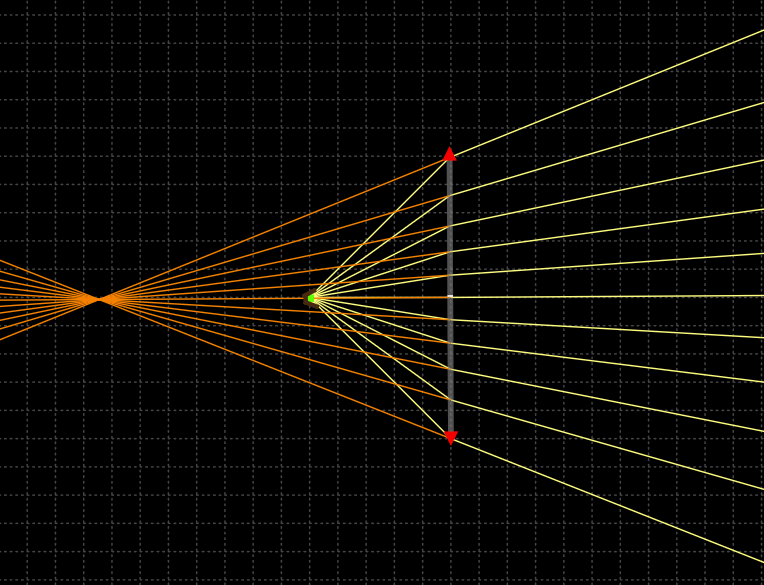You can calculate first the formed image by using the lens equation:
$${1/p + 1/q = 1/f}$$
In your case $q = (1/f-1/p)^{-1}$ with $f=100$ and $p=80$ we solve the equation and get $q=-400$. The negative sign reflects that the image is virtual and on the left side.
From here we will assume $p$ is smaller than $f$ so the image is virtual, but similar concepts will apply with a positive $q$ and a real image.
Once you know where is the virtual image you can calculate the angle using trigonometry. At a given height of the lens $y$ with respect to the optical axis andthe absolute value of the distance to the virtual image $x$ . We can calculate the angle with the following equation: $${\theta} = arctg(y/x)$$
For instance, in your case we have $x= 400$ so in the optical axis $y=0$ and then ${\theta}=0$, which is the expected solution and for a height equal to the distance to the virtual image $y = 400$ we get the $arctg(400/400)= π/4$ or $45°$ which also makes sense.
Finally a more general equation for this system and the given information would look like:
$${\theta} = arctg(y/p-y/f)$$
Note that we inverted the sign inside the arctg as $ x = abs(q)$, as we implied that $p$ is smaller than $f$



